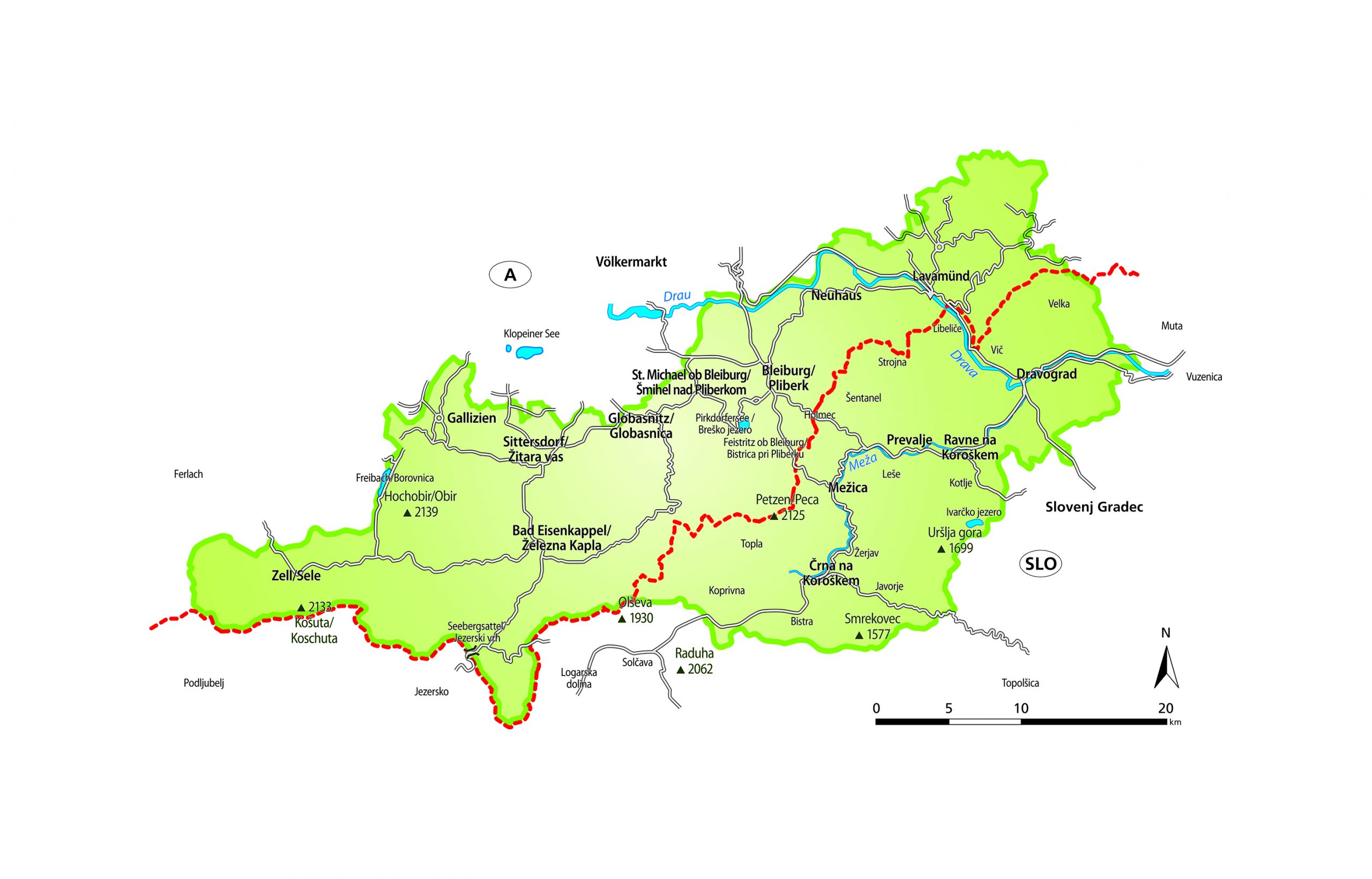KARAVANKE UNESCO GLOBAL GEOPARK
Geoparks are geographically closed areas with clearly defined boundaries. They have an exceptional geological and geomorphological heritage, special on local and national levels, as well as on a European and global scale. In addition to outstanding geological heritage, geoparks also feature natural and historical features, archaeological, technical and other cultural heritage, associated with an exceptional geological structure. The main goals of geoparks are adequate protection and popularization of heritage, education, and sustainable development of the area with the help of so-called geotourism.
Karavanke UNESCO Global Geopark extends over more than 1,000 square kilometres of the cross-border area between Slovenia and Austria, inhabited by around 53,000 inhabitants. It includes fourteen border municipalities: Črna na Koroškem, Mežica, Prevalje, Ravne na Koroškem, Dravograd, Bistrica nad Pliberkom (Feistritz ob Bleiburg), Pliberk (Bleiburg), Suha (Neuhaus), Globasnica (Globasnitz), Galicija (Gallizien), Žitara vas (Sittersdorf), Železna Kapla (Bad Eisenkappel), Sele (Zell) and Labot (Lavamünd). It has been a member of the European and Global Network of Geoparks since 2013, and it has held the title Karavanke UNESCO Global Geopark title since November 2015.
The European Geoparks Network (EGN), founded in 2000, currently includes 94 UNESCO Geoparks from 28 different countries, while the Global Geoparks Network (GGN), founded in 2004, has 177 UNESCO Global Geoparks from 46 countries (2022 data). Karavanke UNESCO Global Geopark is one of only four cross-border geoparks.
Karavanke UNESCO Global Geopark is mainly characterized by mining and mineral deposits, as lead and zinc ore were mined in the area of Peca, Mežica and Obir for more than three centuries. Until the middle of the 19th century, the largest coal mine in Slovenia had been operating in Leše near Prevalje. The brown mineral tourmaline dravite has its classic deposit (locus typicus) in Dobrova pri Dravogradu, while Mežica boasts Europe’s richest deposit of the mineral wulfenite. The ore deposits in Topla, Mežica and Obir are particularly interesting for experts from the ore minerals formation point of view. Despite the fact that the karst phenomena are not the “flagship” of the Karavanke UNESCO Global Geopark, the Obir karst caves are the most beautiful stalactite caves in Austria, and the area between Jezersko and Železna Kapla (Bad Eisenkappel) is called the “area of a thousand springs” because of its many springs. Fossil deposits are one of the most interesting in Europe due to their variety and richness. Several new types of fossils were described from the Triassic layers in the geopark which are named after Slovenia, Peca, Črna na Koroškem and Helenska grapa. The so-called Periadriatic fault system, which is the most important tectonic element of the entire Alpine arc, is formed as a result of the collision and subsequent secondary processes between the Adriatic microplate and the Eurasian plate.
Useful links:
Global Geopark Network I UNESCO Geoparks GGN




